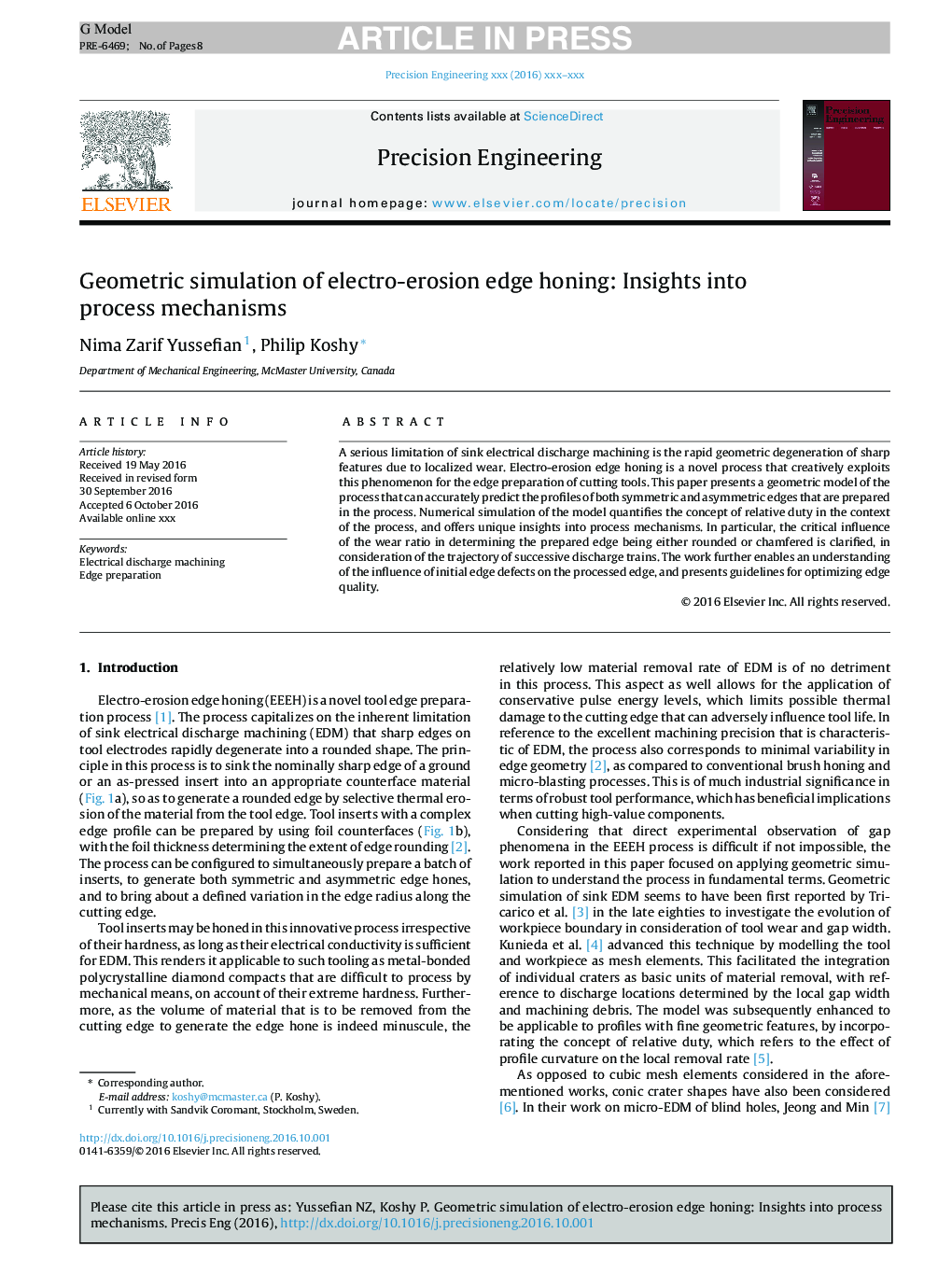| کد مقاله | کد نشریه | سال انتشار | مقاله انگلیسی | نسخه تمام متن |
|---|---|---|---|---|
| 5019129 | 1467840 | 2017 | 8 صفحه PDF | دانلود رایگان |
عنوان انگلیسی مقاله ISI
Geometric simulation of electro-erosion edge honing: Insights into process mechanisms
ترجمه فارسی عنوان
شبیه سازی هندسی لرزه الکترو فرسایش: بینش به مکانیزم های فرآیند
دانلود مقاله + سفارش ترجمه
دانلود مقاله ISI انگلیسی
رایگان برای ایرانیان
کلمات کلیدی
برش الکتریکی ماشینکاری، آماده سازی لبه،
ترجمه چکیده
یک محدودیت جدی در زمینه کارکرد تخلیه الکتریکی نزول، تسریع هندسی سریع از ویژگی های تیز به علت سایش موضعی است. خردایش لبه الکترو فرسایش، یک فرآیند جدید است که به لحاظ خلاقانه از این پدیده برای تهیه لبه ابزار برش استفاده می کند. این مقاله یک مدل هندسی از روند ارائه می دهد که می تواند به طور دقیق پروفیل های لبه های متقارن و نامتقارن که در روند آماده می شوند، پیش بینی شود. شبیه سازی عددی مدل، مفهوم وظیفه نسبی را در زمینه فرآیند، و بینش منحصر به فردی را در مکانیزم های فرایند ارائه می دهد. به طور خاص، تاثیر بحرانی نسبت سایش در تعیین لبه آماده شده که یا گرد یا فشرده شده است، با در نظر گرفتن مسیر قطارهای متوالی، روشن است. این کار بیشتر درک تاثیر نفوذ نقاط اولیه در لبه پردازش را می دهد و دستورالعمل هایی را برای بهینه سازی کیفیت لبه ارائه می دهد.
موضوعات مرتبط
مهندسی و علوم پایه
سایر رشته های مهندسی
مهندسی صنعتی و تولید
چکیده انگلیسی
A serious limitation of sink electrical discharge machining is the rapid geometric degeneration of sharp features due to localized wear. Electro-erosion edge honing is a novel process that creatively exploits this phenomenon for the edge preparation of cutting tools. This paper presents a geometric model of the process that can accurately predict the profiles of both symmetric and asymmetric edges that are prepared in the process. Numerical simulation of the model quantifies the concept of relative duty in the context of the process, and offers unique insights into process mechanisms. In particular, the critical influence of the wear ratio in determining the prepared edge being either rounded or chamfered is clarified, in consideration of the trajectory of successive discharge trains. The work further enables an understanding of the influence of initial edge defects on the processed edge, and presents guidelines for optimizing edge quality.
ناشر
Database: Elsevier - ScienceDirect (ساینس دایرکت)
Journal: Precision Engineering - Volume 48, April 2017, Pages 1-8
Journal: Precision Engineering - Volume 48, April 2017, Pages 1-8
نویسندگان
Nima Zarif Yussefian, Philip Koshy,
